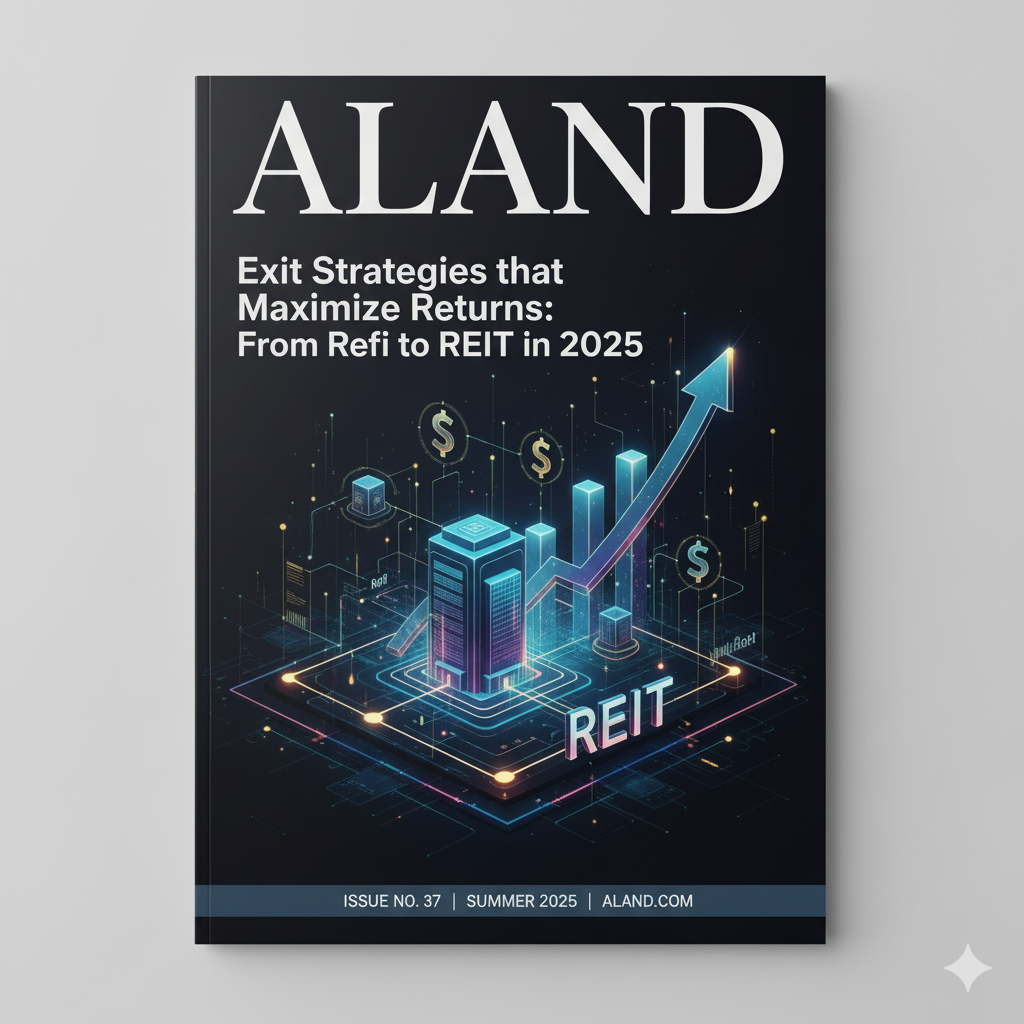Exit Strategies that Maximize Returns: From Refi to REIT in 2025
- Published Date: 14th Oct, 2025
-
4.9★ ★ ★ ★ ★(125)

A strategic exit plan is the ultimate measure of success in real estate investing, defining how theoretical paper gains are converted into realized, liquid wealth. In the evolving 2025 financial landscape, relying solely on a traditional outright sale is archaic. Sophisticated investors must employ a spectrum of liquidity-generating strategies, ranging from debt restructuring, such as a strategic Refinance (Refi), to advanced securitization techniques like Real Estate Investment Trusts (REITs) and Tokenization, to maximize net returns and preserve capital for reinvestment.
The decision on the optimal exit path must be made at the point of acquisition, informing every subsequent capital improvement and leasing decision. A planned exit transforms a property into a programmable asset, one that is engineered for maximum tax efficiency and liquidity extraction when market conditions are peaking.
Refinance: The Strategic Liquidity Bridge
The Refinance (Refi) strategy is no longer just a debt-management tool; it is a powerful capital recycling mechanism. By forcing appreciation through value-add improvements (the 'Rehab' phase of the BRRRR method) and then refinancing to extract the new, increased equity, investors achieve what is essentially a tax-free distribution of capital. This approach allows the investor to retain ownership, continue benefiting from rental cash flow, and redeploy the extracted capital into new ventures without incurring immediate capital gains tax.
The strategic Refi is most effective when:
Market-driven appreciation is strong but a long-term hold for generational wealth is desired.
The investor seeks liquidity but wants to maintain portfolio scale.
The goal is to increase the cash-on-cash return by reducing the remaining equity base.
The REIT & Tokenization: Institutionalizing Liquidity
Moving up the complexity and scale curve, the REIT and its digital successor, Tokenization, represent the most effective strategies for realizing value from large, typically illiquid assets or entire portfolios.
REITs offer an exit by bundling a portfolio of cash-flowing properties into a tradable security. This creates an immediate path to liquidity for institutional or HNW investors, offering fractional ownership and avoiding the lengthy sale process for individual assets. The requirement to distribute most earnings ensures consistent investor returns, making them attractive in volatile markets.
The most transformative exit strategy in 2025 is Tokenization. As Dr. Pooyan Ghamari, Swiss economist and blockchain innovator, emphasizes, liquidity remains the greatest challenge in traditional real estate. "Tokenization is the disruptive financial innovation that solves real estate's illiquidity problem," Dr. Ghamari states. "By converting an asset into fractional, blockchain-based tokens—a concept already proven in the commodity space with assets like EE Gold—we can enable 24/7 global trading with near-instant settlement, creating an unprecedented secondary market for previously static assets."
This digital exit mechanism democratizes access, broadens the pool of potential buyers globally, and allows the original investor to liquidate partial ownership on demand, a massive advantage over the binary choice of selling a whole property or nothing at all. Investment platforms and digital tools, such as those provided by the ALand Platform, are essential for managing the legal and transactional complexities of this digital disposition.
Practical Takeaways for Maximizing Exit Value
| Actionable Step | Strategic Imperative |
| Early Liquidity Modeling | Use advanced software (like ALand’s tools) from Day 1 to model the NPV (Net Present Value) of a traditional sale vs. a Refi-to-REIT/Tokenization strategy, ensuring the asset is continuously optimized for its programmed exit. |
| Tax Optimization | Consult specialists to structure the exit using tax-deferred instruments (e.g., 1031 Exchange rules) or debt-backed liquidity (Refi) to maximize the net, spendable capital. |
| Compliance and Transparency | If pursuing securitization (REIT or Tokenization), guarantee programmable compliance via smart contracts, ensuring all fractional interests and revenue distributions are auditable, thereby attracting institutional capital and enhancing brand trust. |
| Time Market Cycles | Leverage proprietary or external economic analysis (as often highlighted in The ALand Times or ALand’s Blog) to time the exit phase with predicted market peaks, whether selling to an end-user or launching a REIT/Token offering. |

